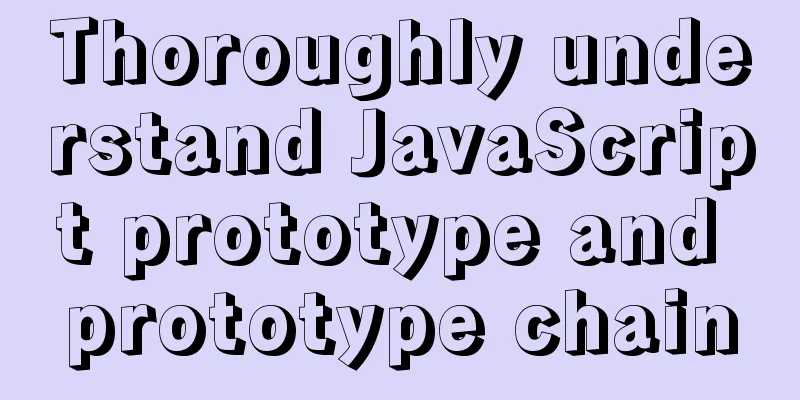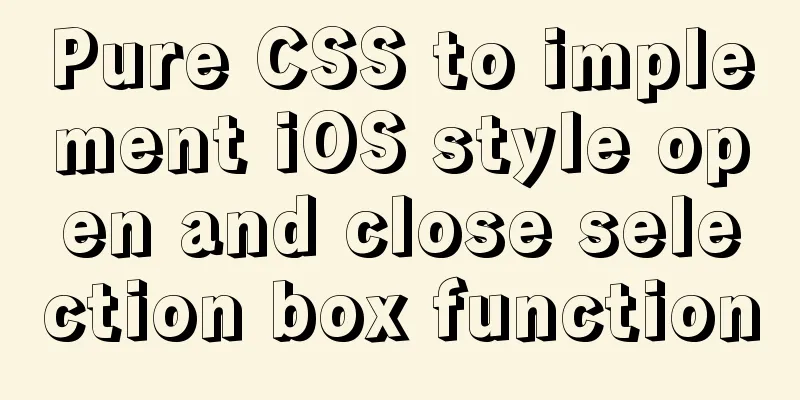Thoroughly understand JavaScript prototype and prototype chain

PrefaceKnowledge of prototypes and prototype chains has always been the focus of interviews. It is not too difficult, but it still takes some effort to fully understand it. Let's take a look at an interview question to whet your appetite:
function User() {}
User.prototype.sayHello = function() {}
var u1 = new User();
var u2 = new User();
console.log(u1.sayHello === u2.sayHello);
console.log(User.prototype.constructor);
console.log(User.prototype === Function.prototype);
console.log(User.__proto__ === Function.prototype);
console.log(User.__proto__ === Function.__proto__);
console.log(u1.__proto__ === u2.__proto__);
console.log(u1.__proto__ === User.__proto__);
console.log(Function.__proto__ === Object.__proto__);
console.log(Function.prototype.__proto__ === Object.prototype.__proto__);
console.log(Function.prototype.__proto__ === Object.prototype);
Laying the foundationAll JavaScript objects are essentially created through the new function, including objects defined in the form of object literals (equivalent to the syntactic sugar of new Object()).
All functions are essentially created through new Function, including Object, Array, etc.
All functions are objects. prototypeEach function has a property prototype, which is the prototype. By default, it is an ordinary Object object, which is the prototype of the instance created by calling the constructor.
Contructor PropertiesJavaScript also has a property that points to the constructor from the prototype: constructor, that is, Func.prototype.constructor --> Func
__proto__All objects in JavaScript (except null) have a __proto__ property that points to the prototype of the object.
function User() {}
var u1 = new User();
// u1.__proto__ -> User.prototype
console.log(u1.__proto__ === User.prototype) // true
Obviously, the __proto__ property of the instance points to the prototype of the constructor, so will the __proto__ of multiple instances point to the same prototype? var u2 = new User(); console.log(u1.__proto__ === u2.__proto__) // true If the __proto__ of multiple instances all point to the prototype of the constructor, then if the instances can access the methods, properties, etc. on the prototype in a certain way, they can program on the prototype and achieve the effect of inheritance. Let's continue to update the relationship diagram between prototypes and prototype chains:
Prototype chainWhen an instance object is looking for an attribute, if it cannot find it, it will follow __proto__ to search for the prototype associated with the object. If it still cannot find it, it will look for the prototype of the prototype until it finds the top level. This is the concept of the prototype chain. Let's take a look at some examples of prototype chains using interview questions: Example
improveAfter learning the above, most interview questions can be answered, such as the following
function A() {}
function B(a) {
this.a = a;
}
function C(a) {
if (a) {
this.a = a;
}
}
A.prototype.a = 1;
B.prototype.a = 1;
C.prototype.a = 1;
console.log(new A().a); //1
console.log(new B().a); //undefined
console.log(new C(2).a); //2
But there is still something missing from solving the original interview questions in the article, such as Function.__proto__ === Object.__proto__, Function.prototype.__proto__ === Object.prototype.__proto__, etc. Let's tackle them one by one. Object.__proto__ , Object.prototype, Object.prototype.__proto__
// Summarize: Object.__proto__ --> Function.prototype Object.prototype.__proto__ --> null Function.__proto__, Function.prototype, Function.prototype.__proto__
Practice proves that there is only Object.__proto__ --> Function.prototype I have been thinking hard but have come up with no result. Could it be that Function is a monkey, jumping out from between the rocks? So I did a bunch of random tests, and unexpectedly found a clue.
From the above we can conclude: Function.__proto__ --> Function.prototype
SummarizeFinally, the knowledge about prototypes and prototype chains is condensed into a picture:
AfterwordThe ocean of knowledge is often vaster than you imagine. I have studied prototypes and prototype chains many times, and I think I have learned them more comprehensively and completely. But after encountering this interview question, I realized that what I had learned was just a branch, and there are really many deep treasures in JS waiting to be excavated. There is no end to learning, let us encourage each other. Finally, here is a simple interview question to boost your confidence:
var F = function () {}
Object.prototype.a = function () {}
Function.prototype.b = function () {}
var f = new F();
console.log(fa, fb, Fa, Fb);
// Prototype chain // f.__proto__ --> F.prototype --> Object.prototype
// F.__proto__ --> Function.prototype --> Object.prototype
This is the end of this article about JavaScript prototype and prototype chain. For more relevant JavaScript prototype and prototype chain content, please search for previous articles on 123WORDPRESS.COM or continue to browse the following related articles. I hope everyone will support 123WORDPRESS.COM in the future! You may also be interested in:
|
<<: CSS Standard: vertical-align property
>>: Analysis of the Docker deployment Consul configuration process
Recommend
NULL and Empty String in Mysql
I recently came into contact with MySQL. Yesterda...
A simple LED digital clock implementation method in CSS3
This should be something that many people have do...
Content-type description, that is, the type of HTTP request header
To learn content-type, you must first know what i...
6 Practical Tips for TypeScript Development
Table of contents 1. Determine the entity type be...
Import backup between mysql database and oracle database
Import the data exported from the Oracle database...
Solution for mobile browsers not supporting position: fix
The specific method is as follows: CSS Code Copy ...
Docker executes a command in a container outside the container
Sometimes we want to execute a command in a conta...
Basic usage of custom directives in Vue
Table of contents Preface text 1. Global Registra...
Teach you how to deploy Vue project with Docker
1.Write in front: As a lightweight virtualization...
HTTPS Principles Explained
As the cost of building HTTPS websites decreases,...
Mysql vertical table conversion to horizontal table method and optimization tutorial
1. Vertical table and horizontal table Vertical t...
Advantages of MySQL covering indexes
A common suggestion is to create indexes for WHER...
Use of Linux tr command
1. Introduction tr is used to convert or delete a...
Table Tag (table) In-depth
<br />Table is a tag that has been used by e...
Application of CSS3 animation effects in activity pages
background Before we know it, a busy year is comi...

















